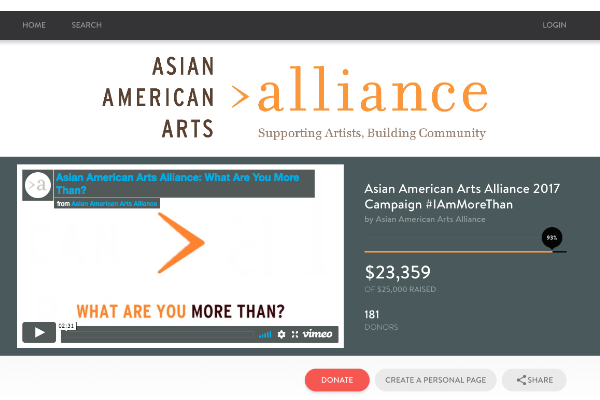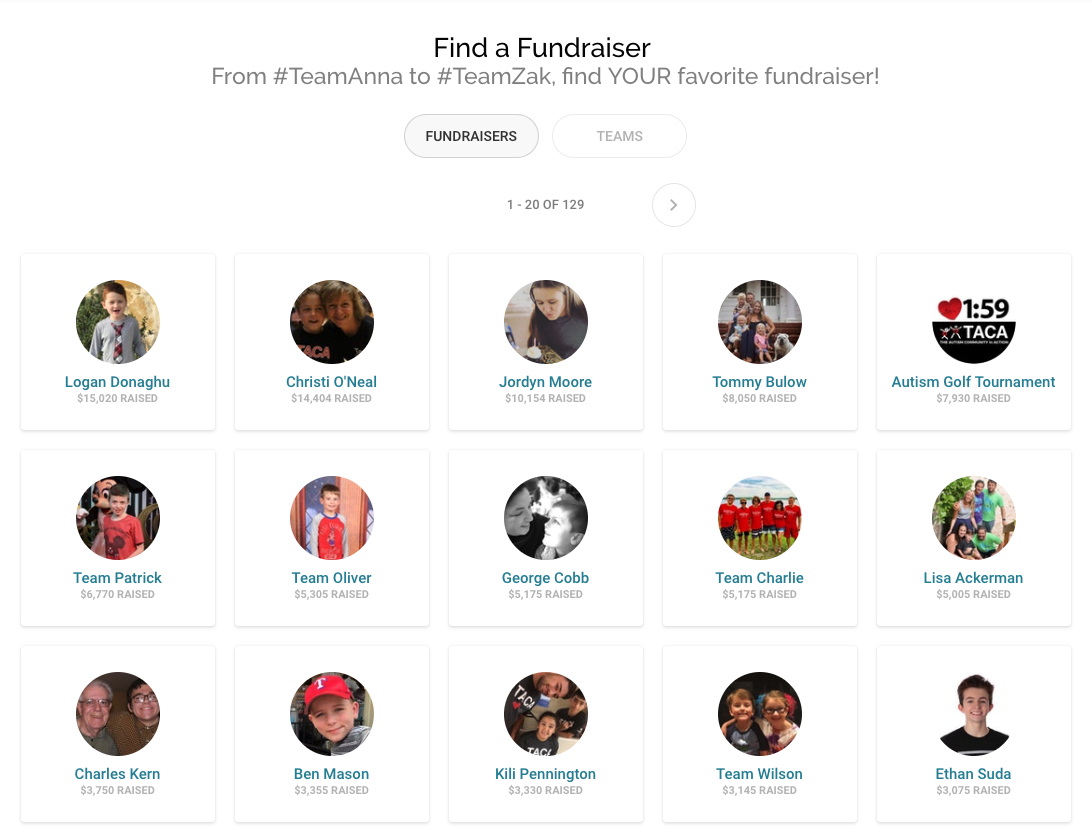The Truth About Fundraising: Something Has To Change
When it comes to fundraising, too often you’ve had to deal with a clutter of tech.
You’re using one software for your donate button, another for your fundraising event, yet another to keep track of donors, and often many more…
Then you’re left to reconcile everything — ugh, what a mess.
Not only is this clutter of tech taking up your valuable time, it’s unsustainable for fundraising growth.
So if you’re having trouble raising money by doing what you’ve always done, your organization isn’t cursed. It really is harder than it used to be.
But, by using a fundraising software that helps tidy up your fundraising, you’ll be more equipped to grow your fundraising with less stress and invest time into fundraising strategies that work.
The top way we’ve seen organizations bring in more donors with less effort on CauseVox is through peer-to-peer fundraising. With clutter-free admin control, time-saving fundraising automation, and real-time reporting, you’re able to spend more time cultivating strong relationships with your supporters and grow your fundraising.
Peer-to-peer fundraising is uniquely suited to help you grow your fundraising because it activates the personal connections between an organization and its supporters, who then rally to fundraise and share their support with their personal networks. Using simple online tools, they share the message with their friends and family and raise money for causes they believe in.
Some of the claims people make about peer-to-peer fundraising seem too good to be true. Others make the whole thing seem impossible. What’s true? Should your organization try this fundraising approach?
At CauseVox, we’ve analyzed over a thousand peer-to-peer campaigns that have collectively raised millions of dollars, so we feel confident hashing out the truth, and one great big lie, about peer-to-peer fundraising.
1. Peer-to-Peer Fundraising Helps Nonprofits Raise Money (TRUE)
You may be thinking, “Can we actually raise money doing this?” and that’s a good question. Lots of fundraising activities don’t have a fantastic ROI, so it’s always worth investigating.
The short answer is yes. You can actually raise money with peer-to-peer campaigns. We see nonprofits of all sizes do it every day.
Consider the Asian American Arts Alliance. Before their first peer-to-peer campaign, they fundraised in a very traditional way, relying largely on grants and their annual fundraising event.
They knew that individual donors were a sector with huge potential, but hadn’t found the right way to engage them.
They saw peer-to-peer as a new way to connect with these donors and get their message in front of more people.

By enlisting their board members as personal fundraisers in their #IAmMoreThan peer-to-peer campaign, the Asian American Arts Alliance raised $23,000. Even more startling, 94% of contributors were new to the organization.
They’re not alone. Peer-to-peer campaigns can keep pace and even outperform traditional ones–we see campaigns that use peer-to-peer on CauseVox raise up to 200% more than standard campaigns.
Even better, peer-to-peer campaigns don’t require the same kind of investment as some traditional fundraising activities, making the return even higher.
2. Peer-to-Peer Fundraising Cuts Through the Chatter of the Hyperconnected World (TRUE)
In a world where everyone is constantly bombarded with messages, it’s hard for nonprofits to get noticed, especially when they’re fundraising.
Peer-to-peer fundraising works around this because it transforms organizational messages into the ones we all prioritize: personal appeals from our friends and family.
Think about it. Which email are you more likely to open first: a mass email from an organization, or a personal email from a friend? Peer-to-peer fundraising messages are based on relationships, so they get attention.
TACA (The Autism Community in Action) has seen tremendous success with peer-to-peer.
A big part of the campaign’s impact came from the stories and personal appeals of the families who benefitted from the group’s programming. These very personal stories were more inspirational than a packaged “message” devised by the organization, and they delivered incredible results.

Your supporters’ endorsement matters more than ever before. With the growth of social media, we’ve become more reliant on peer reviews. People regularly ask their friends to recommend professional services and products, and tend to trust these recommendations over the claims of organizations.
3. Peer-to-Peer Fundraising Gives Supporters What They Want (TRUE)
These days, many donors don’t want to stop at donating. They want to get involved. Peer-to-peer fundraising gives them something to be a part of and a concrete way to make a difference for causes they believe in.
At its essence, peer-to-peer fundraising is a way to volunteer. Instead of committing two hours a week or once a month to physically volunteering, personal fundraisers use their own time and networks to help your organization. They can do it on their own schedules, in their own way, and still make a big impact.
4. You Must Have a Large Supporter Base Already To Succeed (LIE)
One of the most common untruths about peer-to-peer fundraising is that it only works if you already have a big base of supporters to draw from. This simply isn’t true. Your community is bigger than your organization, and even a small number of supporters are connected to a broader network.
Look at NTEN’s 2018 campaign. With only 11 personal fundraisers (the NTEN board), they reached more than 200 donors, raising more than $22,000.
HOPE Worldwide raised $21,000 with 17 personal fundraisers.
We often see powerful campaigns in which board members are the only personal fundraisers–you don’t need hundreds of supporters to get started, you just need good tools for the supporters you have.
Peer-to-Peer Fundraising Is Worth Trying
For most organizations, peer-to-peer fundraising is worth the effort and resources. It doesn’t require a huge upfront investment, and you can start small to see how it works for you. You may be surprised by just how well it works, and how much your supporters enjoy it.
One thing’s for sure: the world is going to keep changing.
However, we can safely guess that people will keep caring about causes, and that relationships will continue to be important. A peer-to-peer approach is of-the-moment, but it’s not “trendy.” It’s the next step to take into the fundraising future.
Want to get more new donors with less wasted effort? Run your peer to peer fundraising with clutter-free admin control, time-saving fundraising automation, and real-time reporting without the extra effort. Learn more about how CauseVox can work for you.




